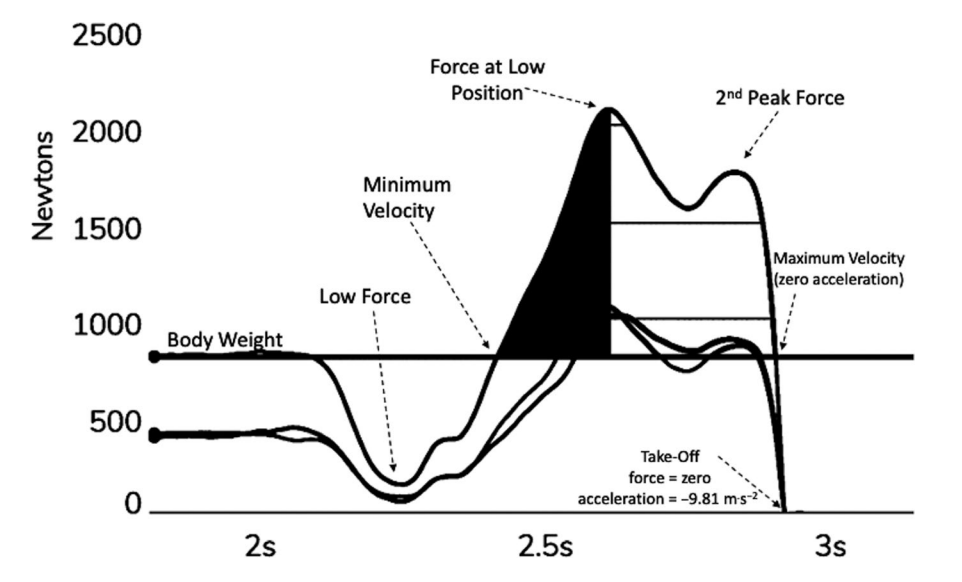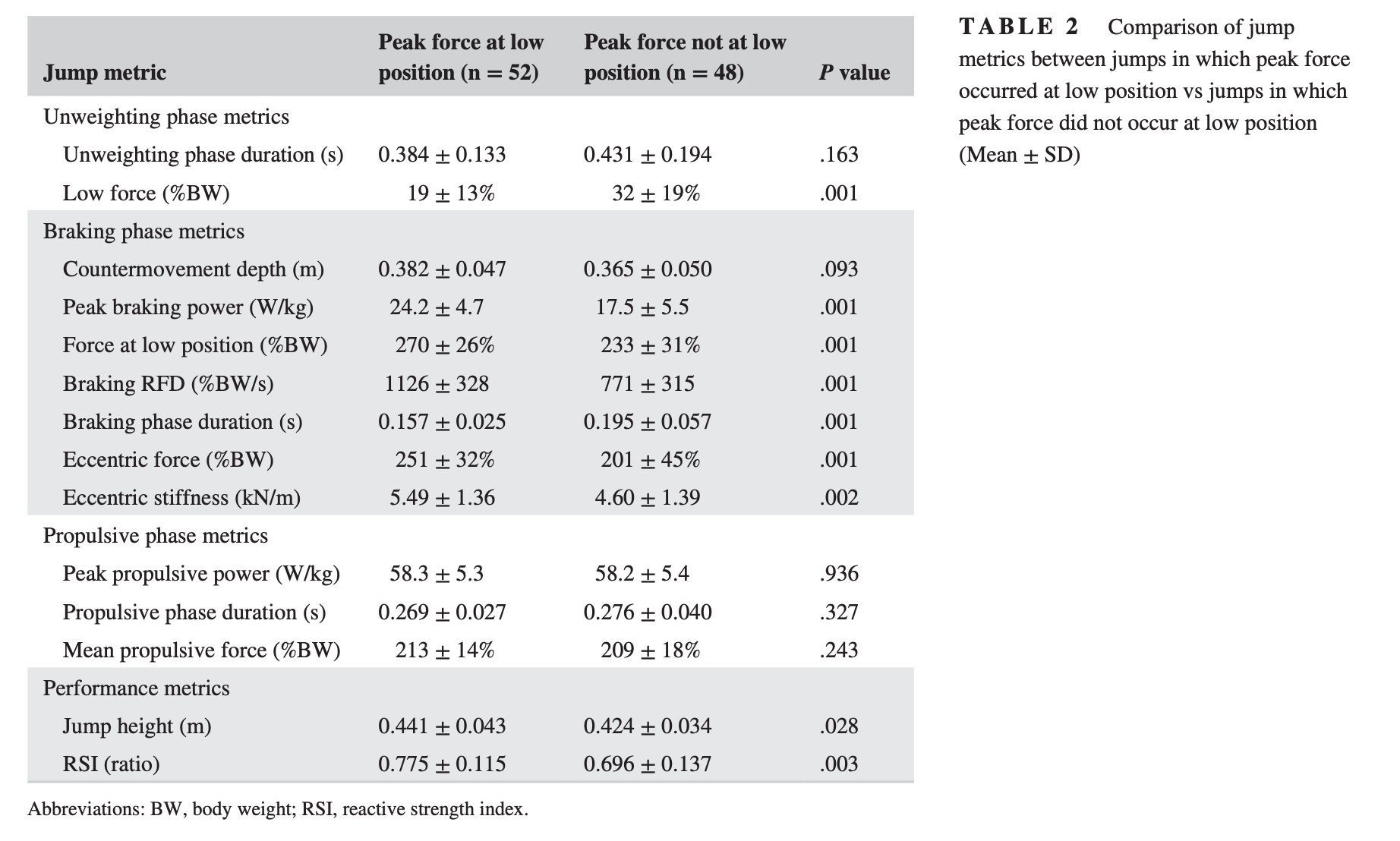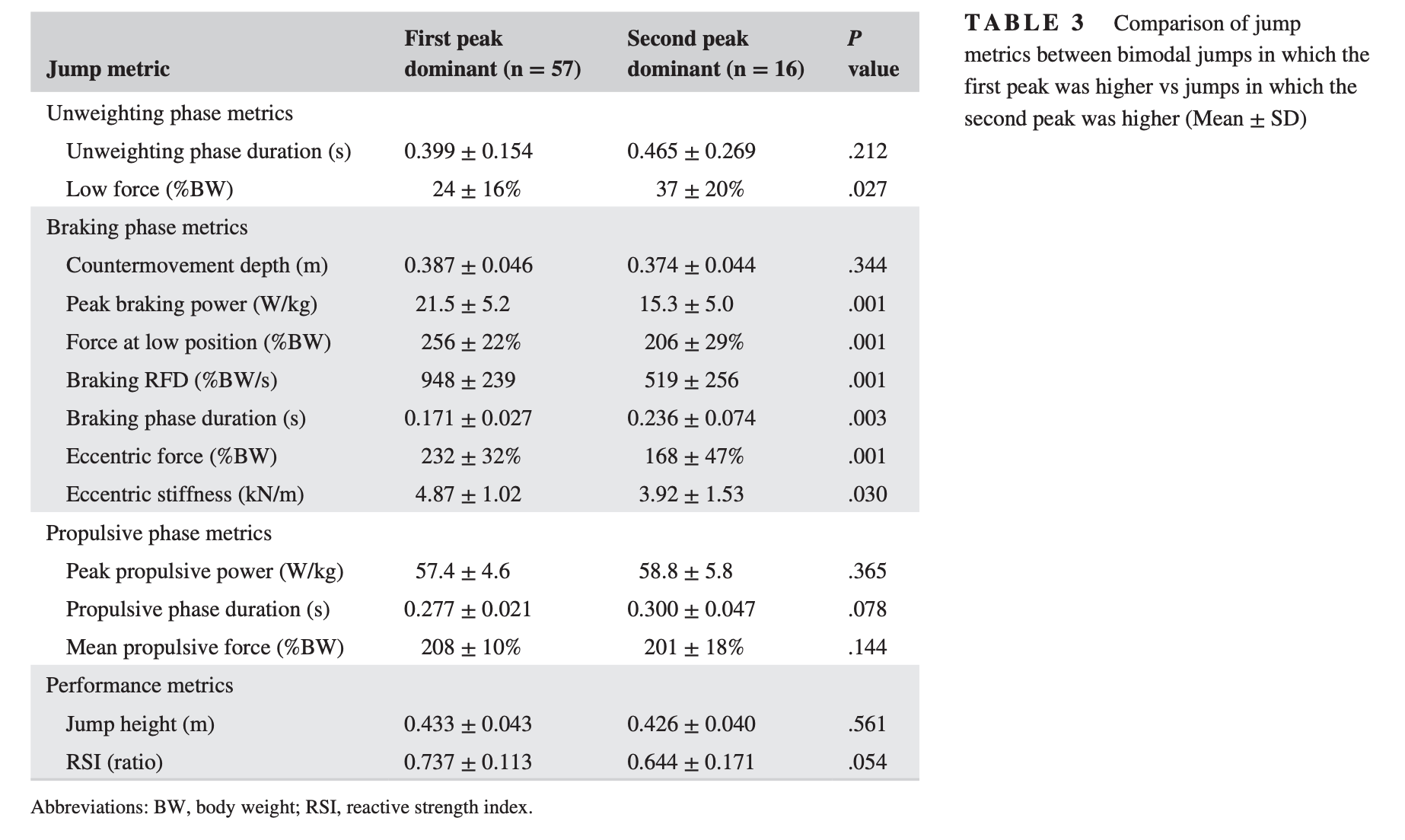Vertical jump testing is everywhere in athlete monitoring.
Coaches often examine jump height, but they often overlook how the athlete jumps, specifically their force-time curve.
This study explored whether jumps with peak vertical ground reaction force (vGRF) occurring at the lowest point of the countermovement were more biomechanically efficient and performance-enhancing.
Is there an optimal ground reaction force profile that predicts better performance in countermovement jumps (CMJ)?

What Did the Researchers Do?
Researchers tested 100 top-performing male NCAA D1 athletes (avg. age 21) in sports such as hockey, lacrosse, soccer, and basketball.
Study Details
- Jumps were performed on force plates
- Only their best CMJ with hands on hips (no arm swing) was analyzed.
- Jumps were categorized as Unimodal (single peak) or Bimodal (two peaks)
- Peak force was categorized as occurring at the low position (within 1%) or before or after the low position
Researchers compared 14 jump metrics across groups: unweighting, braking, propulsive, and performance metrics.
What Were the Results?
1. Peak Force at Low Position = Better Performance
Force at the low position occurred in 52% of all jumps and was associated with:
- 4% higher jump height
- 25% higher RSI (reactive strength index)
- 46% greater braking RFD
- 38% more braking power
- 41% lower unweighting force → better load/unload mechanics

2. Unimodal vs Bimodal:
78% of jumps were bimodal and these jumps had:
- Shallower countermovement
- Shorter braking phase
- Greater eccentric stiffness (+40%)
- Higher RSI, but not higher jump height
3. First Peak > Second Peak (within bimodal jumps):
57 of 78 bimodal jumps were first-peak dominant and had:
- 35% lower low-force
- 83% higher braking RFD
- 38% more eccentric force
- 24% higher force at low position
- 28% shorter braking duration

4. Above-Average Jumpers:
76% had peak force at the low position and showed:
- 57% greater braking RFD
- 34% more eccentric stiffness
- 22% more peak propulsive power
- Only 9% faster propulsive duration
What Does This Mean?
- Jumps where peak force aligns with the lowest point of the countermovement are more biomechanically efficient.
- Stronger braking metrics (RFD, power, stiffness) may separate good jumpers from great ones.
- The shape of the force-time curve (especially a strong first peak in bimodal jumps) reflects better technique and neuromuscular control.
Coach’s Takeaway
- Check if peak force occurs at the lowest point of the CMJ.
- Train eccentric qualities such as high RFD and stiffness in braking to improve jump efficiency.
- Check height and how the athletes generate it to find potential inefficiencies and training targets.

Reference
McHugh MP, Hickok M, Cohen JA, Virgile A, Connolly DAJ. (2020). Is there a biomechanically efficient vertical ground reaction force profile for countermovement jumps? Translational Sports Medicine.




